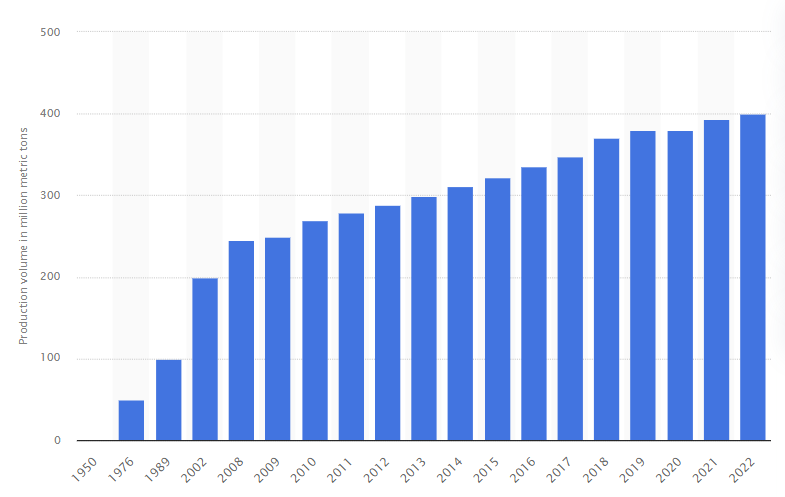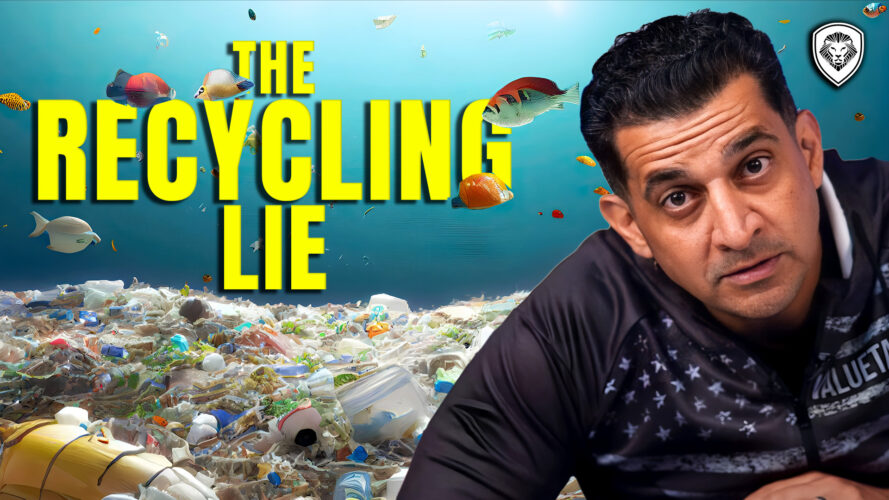In this video, Patrick Bet-David explains the disturbing truth about recycling and its impact on our environment. From contaminated materials to improper disposal, learn why recycling may not be as effective as you think.
The first plastic product was released in 1907 but was not produced on a mass scale until the 1950s when about two million tonnes were produced globally. Now, however, over 450 million tonnes of plastic are created each year.

Learn the benefits of becoming a Valuetainment Member and subscribe today!
While plastic has proven very useful for our modern way of life—used in construction, home appliances, medical equipment, and packaging—it is also highly damaging for both the environment and the human body if inadequately discarded. For instance, microplastics in the human body can negatively affect sperm counts, cause inflammatory bowel disease, and even lead to colon cancer. That is why recycling became so popular, and why our schools, hospitals, and offices have urged us to recycle for years.
Related: Scientists Discover Microplastics in Every Human Placenta
Despite the fact that we recycle most plastic, the vast majority of plastic that we put into recycling bins is sent to landfills, “or worse,” according to a 2022 report from Greenpeace. About 60 percent of the 400 million tonnes of plastic produced each year ends up in landfills and in our natural environment.
In 2016, America produced 42 million metric tons of plastic waste. America reportedly produces twice the plastic waste of China and the more than 27 countries of the European Union combined.
Some 8 million tonnes of plastic are estimated to wind up in the world’s oceans each year, and plastic is thought to make up 40 percent of the oceans’ surfaces.
According to the World Wide Fund for Nature, the average human is ingesting five grams of plastic a week—the equivalent of eating a credit card.
Just like how the tobacco industry knew from internal research that smoking caused cancer as far back as the 1950s but suppressed the truth (until eventually reaching a $206 billion settlement along with 46 states to pay compensation and fund anti-smoking campaigns), the plastics industry has long known about these negative effects.
It is not clear what the right path is to solve this enormous problem, but a way to end it without sacrificing the innovative power of the market is by creating incentives for entrepreneurs to use less plastic. This can be done through government tax credits, for example, or by persuading enough consumers to choose to buy from companies that are more ecologically conscious. In addition, technological innovators like Boyan Slatt and his Ocean Cleanup company show how pollution can be tackled with the same pragmatic spirit that drives the capitalistic private sector.
Interceptor 002 at work in Klang, Malaysia. Was amazing to see it in reality! pic.twitter.com/7xXoYojgzX
— Boyan Slat (@BoyanSlat) November 5, 2019
 Shane Devine is a writer covering politics, economics, and culture for Valuetainment. Follow Shane on X (Twitter).
Shane Devine is a writer covering politics, economics, and culture for Valuetainment. Follow Shane on X (Twitter).


















Add comment